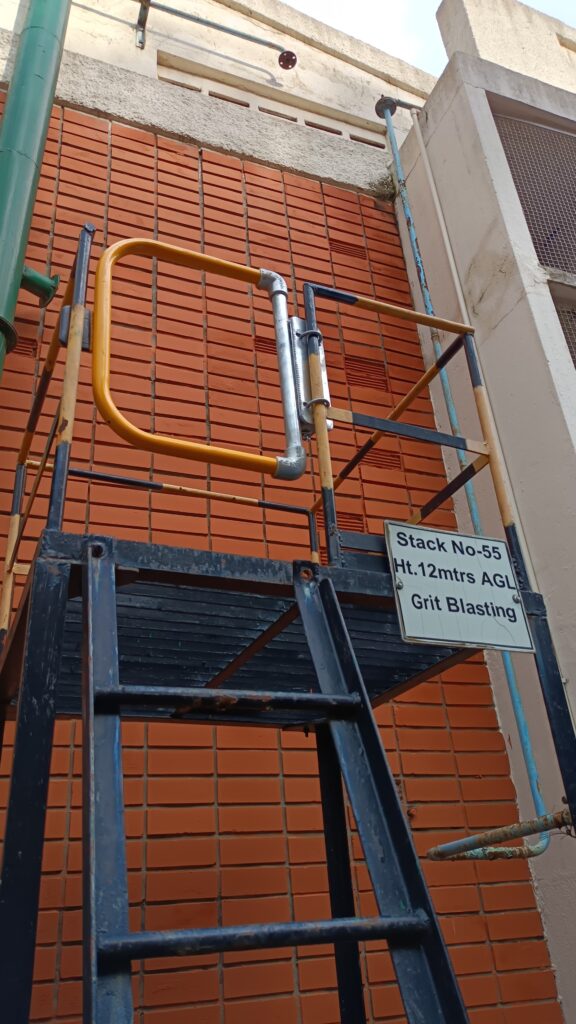
Introduction – Self-closing safety gates
Self-closing safety gates are essential safety equipment used in various industries to prevent accidental falls from hazardous openings. They are designed to automatically close behind individuals after they pass through, ensuring a high level of safety and compliance with regulations. This article delves into the world of self-closing safety gates, exploring their advantages, applications across diverse sectors, and key considerations for selection and use.
Advantages of Self-Closing Safety Gates
Self-closing safety gates offer a multitude of advantages over traditional manually operated gates or leaving openings unguarded. Here are some key benefits:
Enhanced Safety: The primary benefit of self-closing safety gates is their ability to prevent accidental falls from elevated platforms, mezzanines, walkways, or other hazardous areas. By automatically closing behind individuals, they eliminate the risk of someone forgetting to close the gate after passing through.
Improved Efficiency: Self-closing gates streamline workflow by allowing for hands-free operation. Workers can pass through without needing to stop and manually open or close the gate, enhancing productivity.
Reduced Reliance on Memory: Unlike manually operated gates, self-closing gates don’t rely on individuals remembering to close them. This is particularly beneficial in busy environments or for personnel who may be forgetful or distracted
Compliance with Safety Standards: Self-closing safety gates often comply with safety regulations set forth by Occupational Safety and Health Administration (OSHA) or other governing bodies. Using compliant gates demonstrates an organization’s commitment to worker safety and helps mitigate the risk of fines or penalties for non-compliance.
Versatility: Self-closing safety gates are adaptable to various applications and environments. They can be installed indoors or outdoors, in industrial settings, warehouses, construction sites, or even around swimming pools for child safety.
Durability: Constructed from robust materials, self-closing safety gates are built to withstand frequent use and harsh conditions. They require minimal maintenance and offer a long service life.
Easy Installation: Most self-closing safety gates are designed for simple installation. They typically come with pre-drilled holes and mounting hardware, allowing for quick and easy setup by in-house personnel or qualified installers.
Applications of Self-Closing Safety Gates
The diverse advantages of self-closing safety gates make them applicable across a wide range of industries and settings. Here are some prominent applications:
Construction Sites: Construction sites are inherently hazardous environments with numerous fall risks. Self-closing safety gates are essential for securing scaffolding platforms, walkways, stairwells, and roof openings, preventing falls from heights and ensuring worker safety.
Manufacturing Facilities: Manufacturing facilities often have elevated platforms, mezzanines, loading docks, and machinery with fall hazards. Self-closing safety gates effectively safeguard these areas, protecting workers from accidental falls and potential injuries.
Warehouses and Distribution Centers: Warehouses and distribution centers typically have elevated storage areas, conveyor belts, and loading docks. Strategically placed self-closing safety gates prevent falls from these areas and ensure the safety of warehouse personnel.
Rooftop Access: Rooftops present a significant fall hazard. Self-closing safety gates are crucial for securing roof access points, ladders, and hatches, restricting unauthorized access and preventing falls from these elevated areas.
Waste Management Facilities: Waste management facilities can have elevated platforms, walkways, and sorting areas with fall risks. Self-closing safety gates provide an effective solution for safeguarding workers in these environments
Building Maintenance and Facilities Management: Building maintenance and facilities management often involve working at heights. Self-closing safety gates can be used to secure openings around stairwells, elevator shafts, and mechanical equipment, protecting maintenance personnel from falls.
